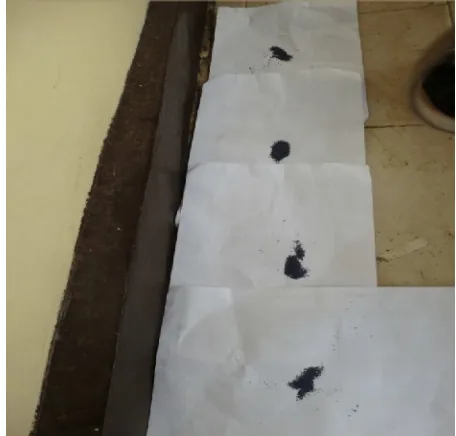Informasi Dokumen
- Penulis:
- Huda Fatmawati
- Tineke Mandang
- Radite P.A Setiawan
- Sekolah: Bogor Agricultural University
- Mata Pelajaran: Mechanical and Biosystem Engineering
- Topik: Performance Analysis Of “Co Seeders” Seed Planting Tools That Precision And Flexible
- Tipe: thesis
- Tahun: 2011
- Kota: Bogor
Ringkasan Dokumen
I. Introduction
The introduction sets the stage for the performance analysis of the 'CO Seeders,' focusing on the technological advancements in seed planting tools. It emphasizes the importance of mechanization in agriculture, particularly in corn cultivation, to meet the increasing demands in Indonesia. The introduction also discusses the critical role of precise planting distances and seed depth in achieving optimal crop productivity, thus framing the relevance of this study within the broader context of agricultural efficiency and sustainability.
II. Literature Review
This section reviews existing research on seed planting technologies, highlighting the development of the 'CO Seeders' prototype. It discusses previous prototypes, focusing on their mechanical and electronic components, and outlines the design considerations based on anthropometric data to ensure usability for Indonesian farmers. The review underscores the necessity for continuous innovation in agricultural tools to enhance productivity, thereby aligning with educational objectives of promoting technology in agriculture.
2.1. Design of 'CO Seeders' Prototype I
The first prototype of 'CO Seeders' was developed to improve seed planting efficiency. It includes mechanical and electronic components aimed at facilitating the planting process. The design was based on ergonomic principles, ensuring that it could be operated by a single person, thus addressing labor shortages in agriculture.
2.2. Design of 'CO Seeders' Prototype II
The second prototype introduced modifications to enhance its functionality, including a new drill design and additional features for fertilizer application. This section details the technical specifications and the rationale behind design choices, emphasizing the prototype's adaptability to various farming conditions.
III. Methodology
This section outlines the research methodology, detailing the experimental setup for testing the 'CO Seeders.' It describes the parameters measured, including planting distance, seed depth, and operational efficiency. The methodology is designed to ensure reproducibility and reliability of results, which is crucial for educational purposes and future research applications.
3.1. Experimental Setup
The experiments were conducted in a controlled field environment, where the 'CO Seeders' were tested across different planting scenarios. This setup allowed for accurate measurement of the tool's performance and efficiency under real agricultural conditions.
3.2. Data Collection
Data collection involved measuring various parameters such as seed placement accuracy, operational speed, and field efficiency. The systematic approach to data collection supports the educational objective of fostering analytical skills in agricultural engineering students.
IV. Results and Discussion
The results section presents the findings from the performance tests of the 'CO Seeders.' It discusses the efficiency of different drill types, the success rates of seed placement, and operational challenges faced during testing. This section is critical for understanding the practical implications of the research and contributes to the learning outcomes by linking theoretical knowledge with real-world applications.
4.1. Performance Metrics
The performance metrics reveal significant differences between the two drill types used in the 'CO Seeders.' The analysis includes efficiency rates and the impact of design modifications on operational outcomes, providing valuable insights for future improvements.
4.2. Technical Challenges
This subsection addresses the technical issues encountered during the trials, such as blockages in the metering device. Understanding these challenges is essential for students and researchers to learn problem-solving techniques in agricultural engineering.
V. Conclusion
The conclusion summarizes the key findings of the study, emphasizing the importance of the 'CO Seeders' in enhancing agricultural productivity. It reiterates the relevance of this research to educational objectives, highlighting how it contributes to the understanding of modern agricultural practices and the role of technology in improving efficiency. The study underscores the need for ongoing innovation in agricultural tools to meet future challenges.
Referensi Dokumen
- Analisis Unjuk Kerja “CO Seeders” Prototipe II Alat Penanam Benih yang Presisi dan Fleksibel ( Huda Fatmawati )
- Analisis Unjuk Kerja “CO Seeders” Prototipe II Alat Penanam Benih yang Presisi dan Fleksibel ( Tineke Mandang )
- Analisis Unjuk Kerja “CO Seeders” Prototipe II Alat Penanam Benih yang Presisi dan Fleksibel ( Radite P.A. Setiawan )









